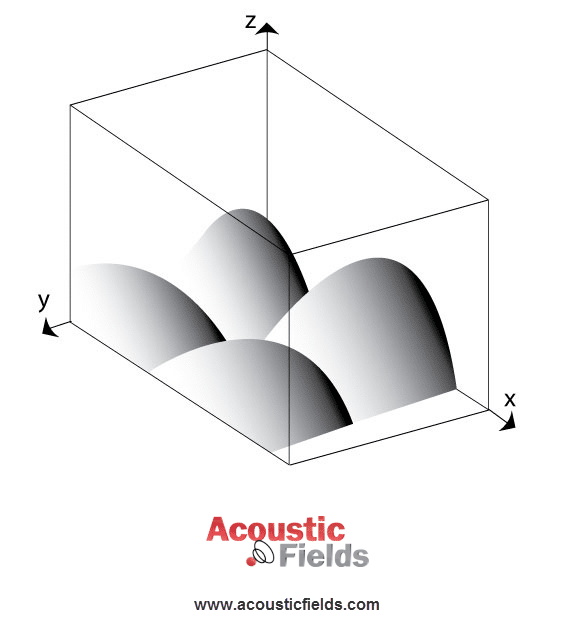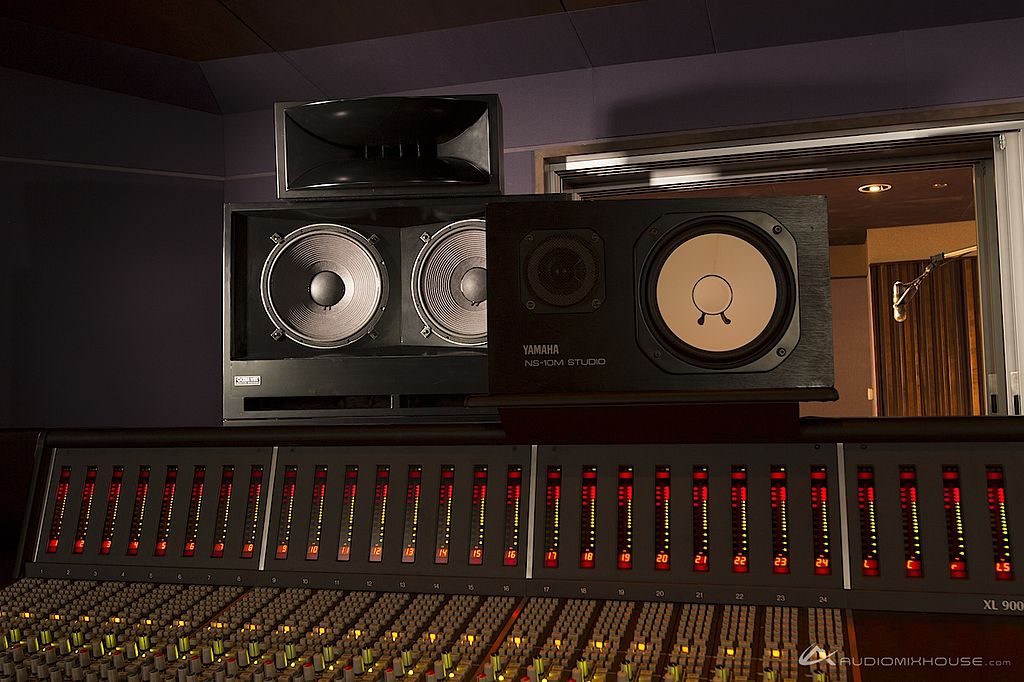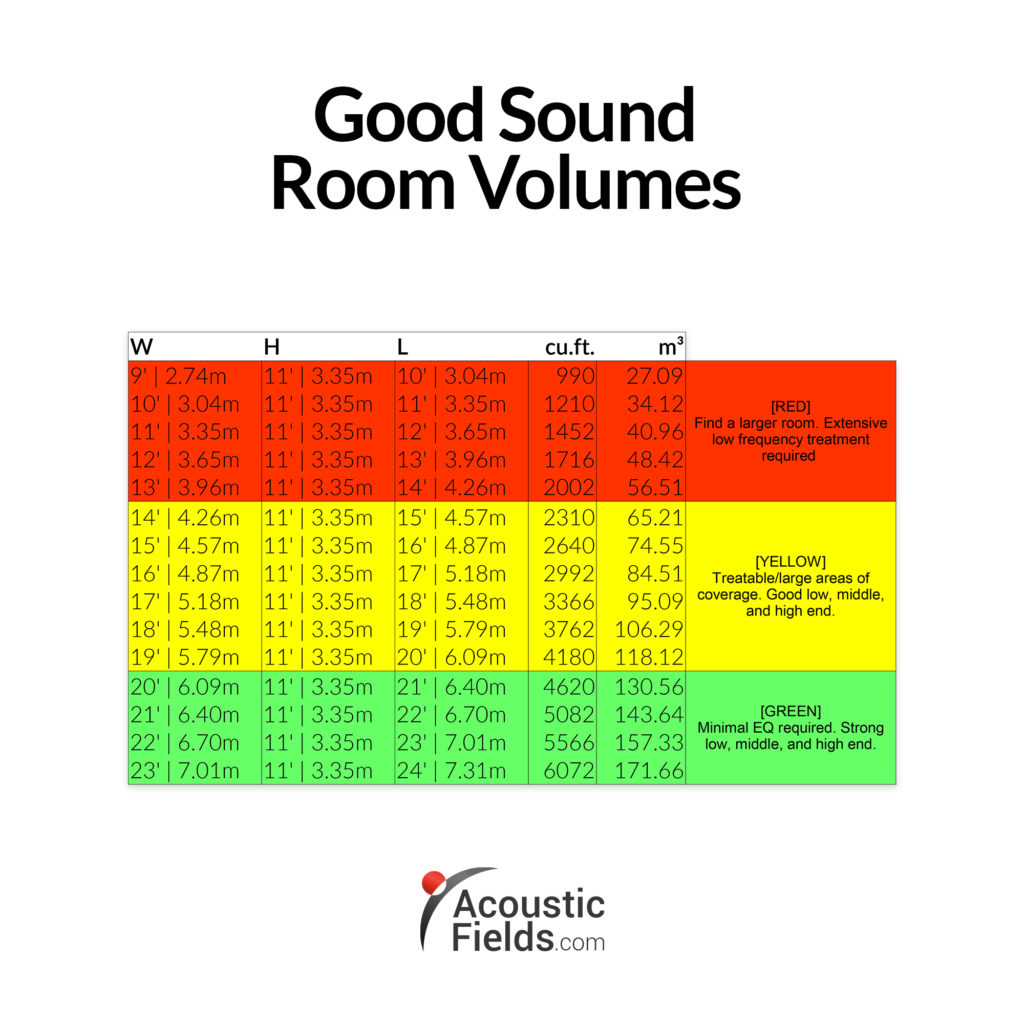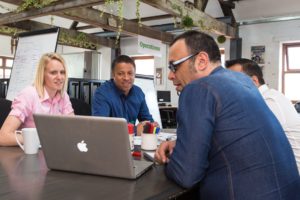What frequencies within our rooms cause the most sonic issues for any type of presentation we do with our loudspeakers? Whether it is in playback mode or monitoring a professional recording, there is only one answer to this question. Low-frequency energy within our rooms causes the most difficulty in any type of presentation that involves our energy-producing device the loudspeaker. Low-frequency energy smothers and blurs middle frequencies where our vocals live. Knowing how our room affects low frequency will assist us in proper loudspeaker positioning. This blog updated on 12/7/19 to reflect changes in knowledge and processing with regards to the space a speaker requires in your room.
Room Modes
Room modes are what we have to watch out for in our small room environments. Low frequency or even middle frequency room modes or resonances exist at certain places within our room and these are what we need to locate and be aware of when it comes to speaker placement. Reflections from room boundary surfaces can easily be tamed with current absorption and diffusion technology, but room modes pose a special problem for our speakers.
Walk About
We can hear these room modes as we walk around our room with an electric bass playing. As we take our walk around the room, we can begin our journey from behind the speakers. Low-frequency energy radiates from a 360-degree radius around our speakers. Bass energy is multi-directional and does not just radiate from the speaker cone area. Bass waves are long and become trapped in our small room enclosed spaces. When they feel trapped, they speak out very clearly to the trained ear.
Start Behind
Standing behind our loudspeakers one can hear the low-frequency build-up when certain notes are played. Next, turn down the sidewalls and walk towards the rear of your room stopping every few feet or so and listen or more appropriately feel the resonances. Resonances vary in their positions depending on room size and volume, but surface boundaries such as our walls are a good start. Finally, move to the rear corners and across the rear wall surface area. Turn and head back towards the room center using a few feet as your increment and return to the speaker’s position.

Pressure Modes
Speaker Manufacturer
A speaker manufacturer deals with room boundaries when they design loudspeakers. They refer to the distance and area that their speaker works in as “acoustic space”. There are three different but related “spaces” that must be discussed. “Full space” is in essence free space listening. It is listening without walls, floors, or ceiling. It is listening with no room or earth effects influencing the direct sound from our loudspeakers. A speaker, a small monitor on a stand, would be considered installed and operating in free space.
Half Space
Half space is when we have to introduce one boundary surface into our room. In half-space, we move the speaker up against the rear wall surface area. It needs to be positioned so the speaker’s back is flat against the wall. This is a half-space operation as defined by the speaker manufacturer. The major frequency response change in our room as a result of the speaker resting against the rear wall is a 3-6 dB. gain at and around 50 cycles. In-wall speakers, which we see in home theater installations, where the drivers are flush with the existing wall surface are speakers that are operating in half-space. Let see, speakers flush-mounted with the wall they are installed in, ouch!
Quarter Space
Quarter space is all about the corners of our rooms; think a rectangular room with four corners. As with half-space, we must have a low-frequency boost in quarter space-frequency response. In quarter space, we will see a 6-8 dB. increase in the 40 Hz. 50 Hz. range. It is common although questionable practice to place subwoofers in the corners of rooms. Obviously, the argument correctly stated is that there is an energy boost at low frequencies. That said and agreed to, can the room handle more energy correctly at these low frequencies? Can it handle the sub woofer’s energy without being placed in a corner? If it can not in free space, you will have no chance in quarter space with energy reinforcement offered by two adjoining wall structures.
Room Corners
The corners of our rooms also where all room modes end up. These room modes can be of the low-frequency variety but they can also be middle-frequency modes where our vocal energy lies. Do we really want to excite all of these wavelengths which huge pressure gains from 40 – 50 cycles? If they are below audibility, let us leave them be. Let us leave the corners alone except for properly tuned sound absorption technology that has the necessary rates and levels of absorption to tame the surface boost from the corner’s adjoining wall surfaces. An absorber designed for room corner placement must be able to operate from 30 Hz. – 100 Hz. This is too large a task for the foam to handle.
Eighth Space
There is also such a thing as eighth space which means that we take our speaker and place it on the floor off its stand. Next, we move the speaker which is now on the floor, into the corner. If we don’t like that position, we can move it up the corner walls and glue it to the ceiling making sure it is still in the room corner. In this scenario, we can add a 12 dB. boost to some lower frequencies.
Science and Gain
There is science behind the predictable boost in low frequencies with half, quarter, and even eighth space. However, gain in low frequencies from a room boundary surface is exactly what we do not want, even with subwoofers. When we move our speakers out into the room into more of a free space existence, away from room boundary surfaces, the speaker’s low-frequency drivers can place energy into the room that does not fit into the existing room dimensions. It is this frequency-dependent, excess, room energy that crates our room resonances or room modal issues.
Frequency Cancellation
Secondly, we can have frequency cancellation between the room’s boundary surfaces and the speaker placement position due to you guessed it, half-wave and quarter wavelength theory non-compliance. Speaker boundary/frequency cancellation can also be the opposite if room modal issues happen to stop by at your speaker location.
Rectangular Rooms Only
Take your rectangular room, no other room shapes, please. Rectangular rooms are good because they are predictable and consistent with their acoustical behavior. Now, divide it into thirds. Place your speakers on the first third /second third dividing line. Measure the room’s response at that speaker position. Move the speakers back three inches and remeasure. Move the speakers back to the baseline and then three inches forward with a measure at that new forward position. Now, you have three measurements to work with.
Low Frequency First
Always choose the best low frequency response curve of the three or try 6″ forward and then 6″ back if you do not like any response. You will have enough data to make a good start and then you can voice or fine-tune the room as you listen to new music through your speakers. At this point in your room analyzing and tuning process, small speaker movements will produce big results. Move slowly and in small increments. Mark your positions with clear scotch tape, so no one will notice and remove them.
Low-Frequency Treatment
Diaphragmatic absorption. Low-frequency absorption requires special technology to deal with the high-pressure waves of frequencies below 100 Hz. Low-frequency energy is like ocean waves oscillating through your room. Middle and high-frequencies rays are more straight lines and smaller types of energy. Pound per pound diaphragmatic absorption is the most powerful of all the low-frequency technologies.
Low – Frequency Diaphragmatic Absorption: https://acousticfields.com/product-category/sound-absorption/acda-series/
Middle And High-Frequency Treatment: https://acousticfields.com/product/acoustic-panels/
Learn More About Us At Acoustic Fields: https://acousticfields.com/about/
In Summary
I hope this discussion on speaker positioning and the space the require in your room helps solve the problem you are having. Please message me at info@acousticfields.com if you have any questions as I am always happy to help. If you want more to learn more about room acoustics please sign up for our free acoustic video training series and ebook. Upon sign up you will instantly have access to a series of videos and training to help improve the sound in your studio, listening room or home theatre.












The discussion on ductwork noise transmission from Acoustic Fields highlights crucial aspects of HVAC system acoustics. The movement of air…
Great build plans. thank you Denis
You must use absorption. Never place a chair against a wall.
A friend and I built several diffusors using these plans and they turned out absolutely beautiful. Very good instructions and…